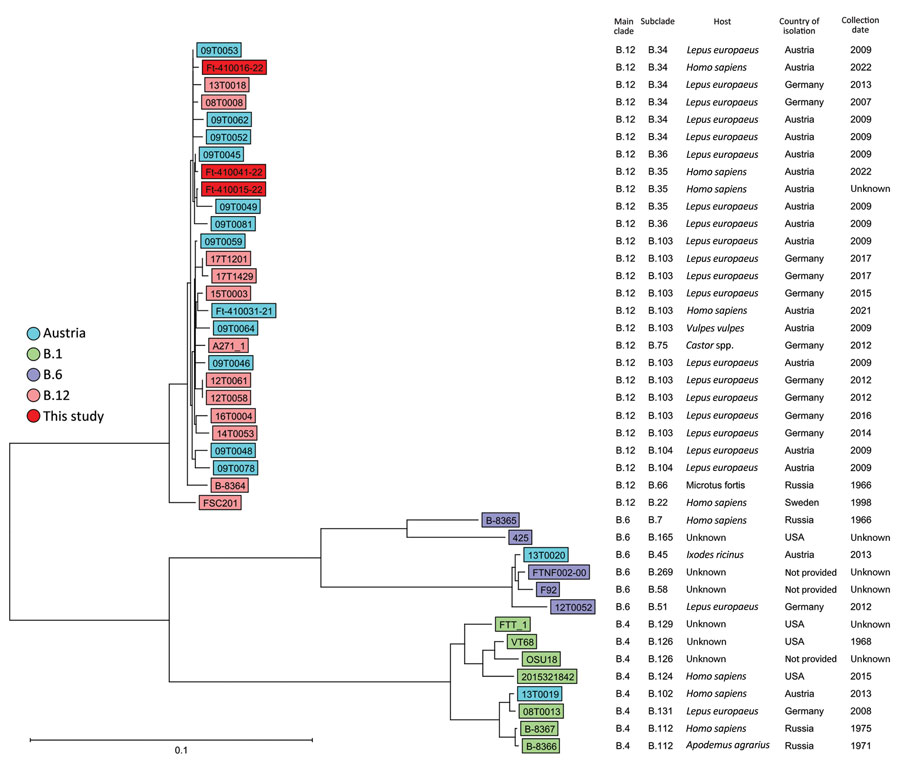Volume 29, Number 11—November 2023
Dispatch
Three Cases of Tickborne Francisella tularensis Infection, Austria, 2022
Figure 2

Figure 2. Ridom SeqSphere+ NJ tree (Ridom Gmbh, https://www.ridom.de) for 41 Francisella tularensis samples isolated from 3 patients in Austria, based on 1,147 columns from F. tularensis core-genome multilocus sequence typing. Scale bar indicates nucleotide substitutions per site. Metadata are provided in the Appendix Table.
1These senior authors contributed equally to this article.
Page created: September 28, 2023
Page updated: October 23, 2023
Page reviewed: October 23, 2023
The conclusions, findings, and opinions expressed by authors contributing to this journal do not necessarily reflect the official position of the U.S. Department of Health and Human Services, the Public Health Service, the Centers for Disease Control and Prevention, or the authors' affiliated institutions. Use of trade names is for identification only and does not imply endorsement by any of the groups named above.